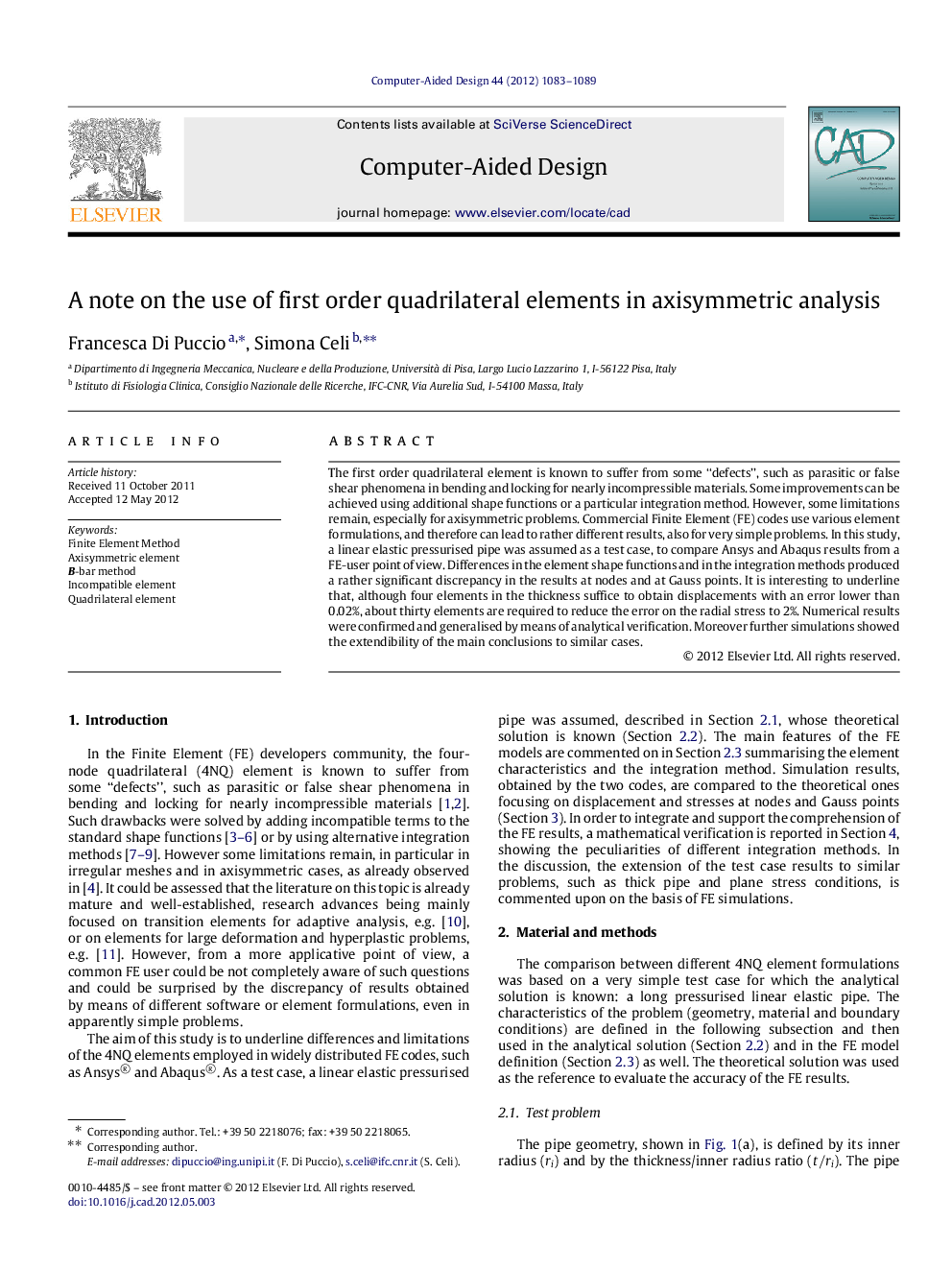| کد مقاله | کد نشریه | سال انتشار | مقاله انگلیسی | نسخه تمام متن |
|---|---|---|---|---|
| 440807 | 691281 | 2012 | 7 صفحه PDF | دانلود رایگان |

The first order quadrilateral element is known to suffer from some “defects”, such as parasitic or false shear phenomena in bending and locking for nearly incompressible materials. Some improvements can be achieved using additional shape functions or a particular integration method. However, some limitations remain, especially for axisymmetric problems. Commercial Finite Element (FE) codes use various element formulations, and therefore can lead to rather different results, also for very simple problems. In this study, a linear elastic pressurised pipe was assumed as a test case, to compare Ansys and Abaqus results from a FE-user point of view. Differences in the element shape functions and in the integration methods produced a rather significant discrepancy in the results at nodes and at Gauss points. It is interesting to underline that, although four elements in the thickness suffice to obtain displacements with an error lower than 0.02%, about thirty elements are required to reduce the error on the radial stress to 2%. Numerical results were confirmed and generalised by means of analytical verification. Moreover further simulations showed the extendibility of the main conclusions to similar cases.
Journal: Computer-Aided Design - Volume 44, Issue 11, November 2012, Pages 1083–1089